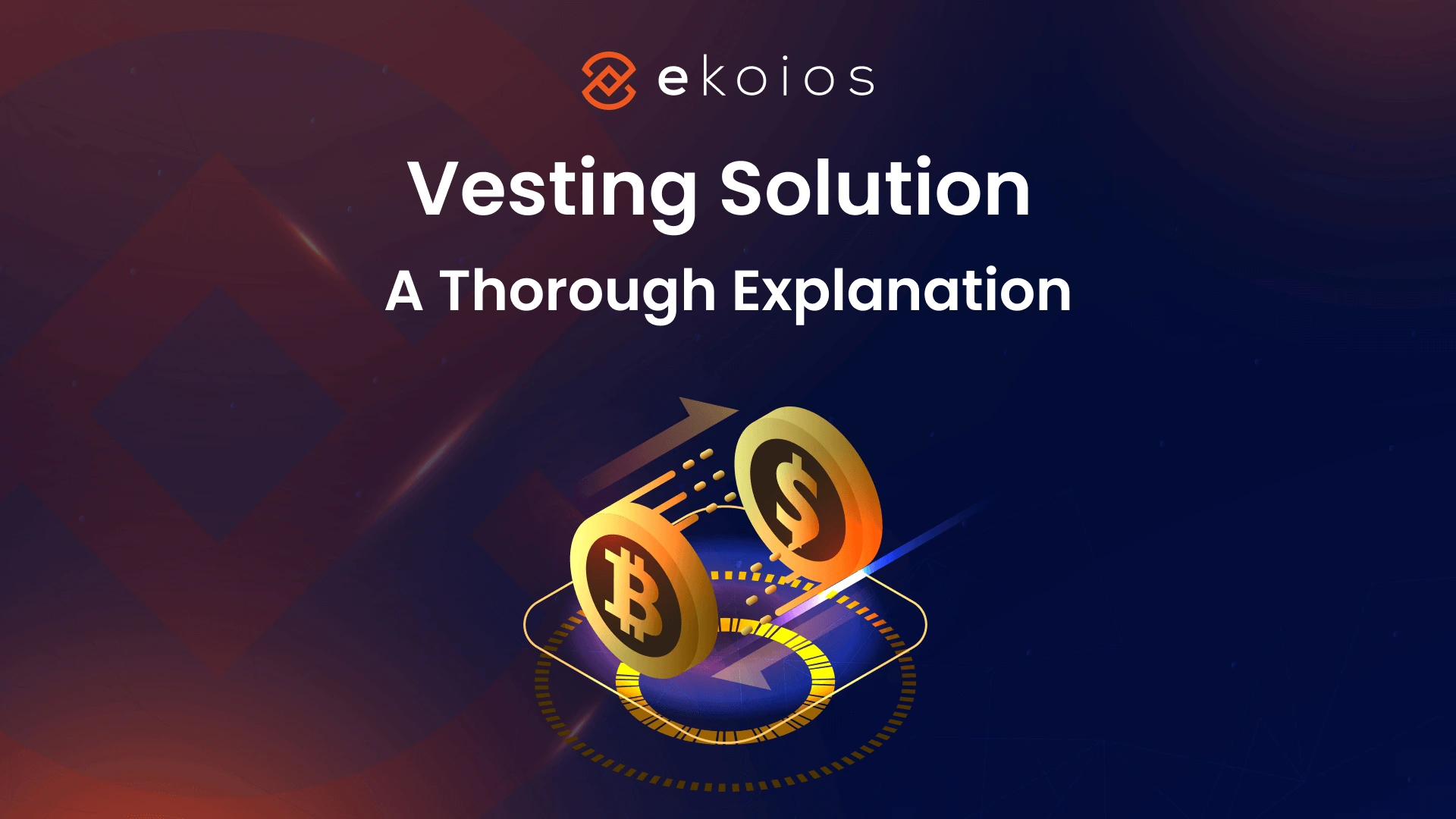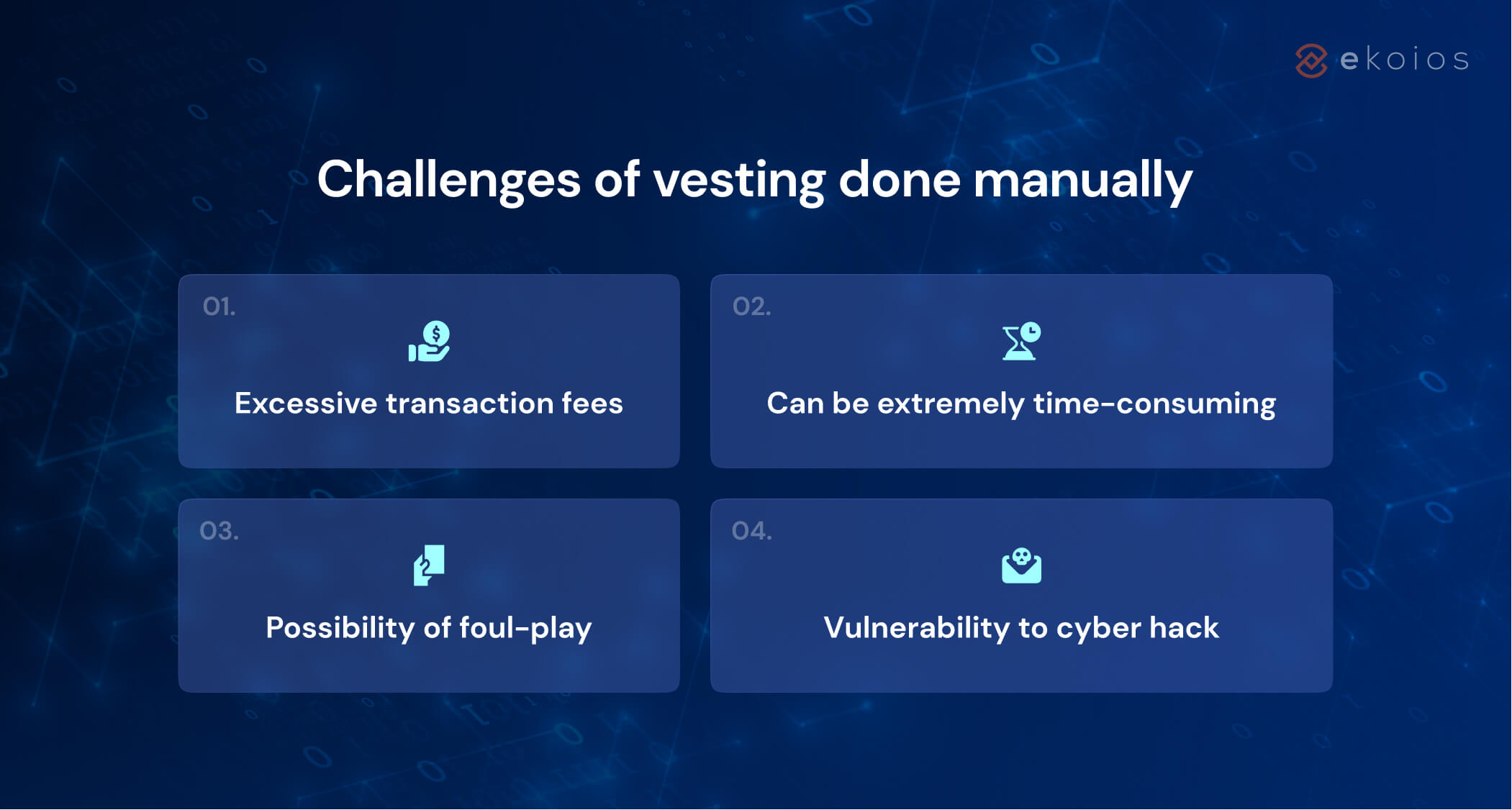
- 1
- 2
- 3
- 4
- 5
- 6
The building of each blockchain project requires fundraising to ensure that it survives buoyantly after it has been launched. On this note, token vesting is not only critical to the fundraising of most blockchain projects, but it also helps to have every hand on deck for a longer time.
According to research, most successful projects always have a solid vesting schedule. For example, Efinity—a cross-chain NFT blockchain network—is a project that has been around since 2009.
Analysts have opined that one of the reasons Efinity is thriving is that it implemented a 5-year vesting schedule at launch. Similarly, AAG—one of the fastest-rising gaming projects—has vested tokens that will be released over four years.
While vesting is fast becoming the order of the day among most Defi projects and even DAOs, some people are still in the dark about what it means. In fact, some have expressed how they found it confusing.
On this note, we will be giving a thorough explanation of token vesting in this blog post. Not only that, we would discuss the challenges of manual vesting and why a vesting solution is needed.
What is vesting in crypto?
Vesting is from the Latin word “vestire.” Putting into context, vestire refers to the act of putting an asset in the custody of a third party.
Back to Defi, token vesting—which some call token lock-up—is the process of locking up a certain amount of the total tokens from circulation. These tokens are often released over an agreed period, which is usually over the years.
Core team members, partners, and advisors are always entitled to these vested tokens. The reasoning behind token vesting is to make sure the core stakeholders of the project do not receive their rewards at once, thereby keeping them around to ensure the growth of the project.
Hold on to this simple explanation of vesting: it is the act of locking some tokens to be released gradually as the project grows.
The history of vesting?
Just like some other concepts in DeFi, token vesting has its root in traditional finance. It became popular when it was being incorporated as a labor policy.
That is, several companies have adopted a plan where they will keep some portion of their employees’ salaries over the years so they can receive them when they are retired. The aim of vesting is to make employees spend longer time within the company.
Gradually, the idea of vesting transcended traditional firms as different startups started adopting something similar. While traditional companies use vesting to make employees stay longer, blockchain projects started adopting vesting to make their investors stay longer.
How did vesting become quite popular in crypto?
When DeFi was gaining more mainstream adoption, some investors always ape into projects to pump and dump their tokens without really believing in the values the project is proposing. As a remedy, crypto projects were adopting the concept of vested tokens to checkmate this.
🔸 Read more: What Are Vesting Schedules? How Do You Evaluate A Vesting Solution?

Manual vesting vs. automated vesting? challenges of vesting done manually
Token vesting can be executed in two ways: via automated vesting or manual vesting. While manual vesting sounds like a cost-effective idea, it is flawed on all sides. If weighed well, the benefit of utilizing a vesting resolution is better than controlling it manually.
For the sake of clarity, here are the 5 challenges that beset manual token lockup:
1. Excessive transaction fees
Banks often deduct transactional charges in traditional finance. A similar occurrence happens in DeFi, fees are deducted upon every transaction. On the Ethereum blockchain, these “fees” are better called “gas fees.”
Since manual vesting is operated one after the other, the transaction fees pile up and eventually become excessive. This can become unbearable if the standard token of the project is ERC-20 which is for the Ethereum blockchain.
2. It can be extremely time-consuming
There are a lot of people who participate in a project – the core team, partners, advisors, and pre-sale investors. Depending on the project, the team and advisors are always around 50, while the pre-sale investors may be up to 4,000.
With this huge number, an attempt to manually distribute these tokens would consume a lot of time.
That aside, anyone who makes crypto transactions regularly will agree that mistakes are prone to occur. In other words, the consequences of those mistakes can be at a steep price.
3. Possibility of foul-play
Trust is expensive in the crypto industry. Hence the reason the existence and custodianship of every asset must be transparent. Nonautomatic vesting usually operates in such a way that one or two top people—possibly the founders—in the project have access to the wallet where the tokens are locked.
First, this practice is a weak point since the founders themselves are part of those whose tokens have been vested. Indeed, no one would know if they both plan to withdraw all their tokens which would be unfair to others.
Beyond that, they may withdraw the share of tokens when the project reaches an all-time high and dump it. This foul play would be successfully done because the vesting is a manual one.
Recall a similar occurrence last year where the founders of Africrypt withdrew the liquidity of the exchange—which was around $4 billion—and shut it down. This can also happen concerning vested tokens.
4. Vulnerability to cyber hack
Security is a key infrastructure that would determine whether or not a project will succeed. In vesting done manually, the founders are often in charge of the wallet, and this can be risky.
Some often advocate that the vested funds can better be stored in a hardware wallet. This is as unsafe as its hot wallet counterparts. A couple of weeks back, Verge reported that hackers successfully pulled out $2 million worth of crypto funds from a hardware wallet.
Meanwhile, the Messari report predicted that the rate of crypto hacks will increase—more than ever—this year. Crypto.com testified to this when it affirmed that some of its users were hacked and the “unauthorized withdrawals” were around $30 million.
On this note, it is clear that manual token vesting is more vulnerable and quite inadvisable.
🔸 Read more about Age of Gods – A Vesting tool case study

Why do you need an advanced token vesting resolution?
Having explained the weaknesses and the risks associated with manual vesting, a better and more common option is vesting automation. Before we proceed, what is a vesting solution?
A vesting solution is a smart contract that was programmed to create and facilitate the disbursement of the periodic release of some amount of tokens to a loss of eligible wallet addresses.
In case you wonder why most DAOs and DeFi projects utilize automated vesting, they have a couple of advantages over their manual counterparts. Here are the reasons why you need to adopt a vesting product:
1. It is automated
The first reason you need a white-label vesting product is because of the efficient and programmed distribution of locked-up tokens.
This is unlike manual vesting where the wallet addresses can mix up or some investors won’t be able to claim their tokens at all. It will save you time, energy, and resources. At the right time, each investor can go to the vesting portal to claim their tokens without congestion.
2. It is faster
Locked-up tokens can be claimed faster with an automated vesting pool because the smart contract will release everyone’s tokens immediately after it is requested.
Investors always appreciate it when they get their claimed tokens on time. It makes them believe more in your project.
When each investor requests to claim his or her token, the smart contract carries out internal checks to verify if such a person is vested. If this is confirmed, the tokens will go to the claimant’s wallet in a matter of minutes.
3. It is fee-friendly
One of the reasons you need a ready-made automated vesting product is to cut unnecessary costs on fees. Using USDT—ERC-20—as an illustration, there is generally a deduction of USDT $35 gas fees on some amounts of transactions.
Meaning that if the custodian of the vesting schedule pays 500 investors, they will pay a $35 gas fee every time. With a pre-built portal for vesting, these gas fees can be paid once and for all because the disbursement of the tokens would have been programmed together.
4. It is more secure
Your tokens are more secure on a vesting system than in some wallets. An attempt to keep your locked-up tokens by yourself will make it easier for hackers to infiltrate them.
Comparing statistics, the number of hacked wallets is way more than the number of hacked vesting portals. Moreover, security breaches always dampen the trust of the community in any crypto project.
Thus, having a regulated-by-code vesting procedure will make you 100% transparent to your community.
Utilize Ekotek vesting solution for your token lockup
As a blockchain development company that has existed for years, Ekotek has built formidable white-label vesting products for different projects.
Knowing well that security is of utmost importance for any vesting schedule, our world-class development team has hands-on experience in how to build a fast and precise vesting portal with 100% data integrity.
Moreover, our UI/UX team will build the automated vesting in a way that will be consistent with your brand identity. This customization makes you communicate faster and better with your users.
Once you get in touch with us, we will get your vesting portal ready in a matter of weeks to get things going. To show our excellent track record, we built vesting portals for the popular NFTify and Beyond Finance.
If you would like to know more about our bespoke white-label vesting porta, book a consultation with us today.
See our white-label vesting tool in action
- 1
- 2
- 3
- 4
- 5
- 6